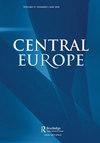同性恋轻骑兵:多瑙河地区骑兵的起源与传播
IF 0.1
2区 历史学
Q2 HISTORY
引用次数: 0
摘要
本文探讨了“同性恋”一词是如何在多瑙河地区的语言中传播的。此外,它还假设在何种接触情况下会发生借贷。在此,它提出了一个案例研究说明词汇借用在拟议的多瑙河沿岸。根据这项研究的发现,意大利的道路工人用维也纳德语介绍了Buserant,然后它通过军队服役和/或奥地利匈牙利酒馆的旅行者传播开来。这种借用似乎仅限于奥匈帝国的语言,而不包括意第绪语,这可以用意第绪语社区在19世纪中期相对孤立来解释。本文章由计算机程序翻译,如有差异,请以英文原文为准。
The Gay Hussar: The Origins and Spread of Buserant in the Danube Region
ABSTRACT This papers examines how the word Buserant ‘gay’ spread in the languages of the Danube region. Further, it hypothesises in what contact situations borrowing occurred. In this, it presents a case study illustrating lexical borrowing in the proposed Danubian Sprachbund. According to the study’s findings Italian road workers introduced Buserant in Viennese German from where it spread through army service and/or travellers in taverns of Austria Hungary. The borrowing appears to be restricted to the languages of Austria-Hungary and excludes Yiddish, which can be explained by the relative isolation of Yiddish-speaking communities by the mid-nineteenth century.
求助全文
通过发布文献求助,成功后即可免费获取论文全文。
去求助
来源期刊

Central Europe
HISTORY-
CiteScore
0.20
自引率
0.00%
发文量
7
期刊介绍:
Central Europe publishes original research articles on the history, languages, literature, political culture, music, arts and society of those lands once part of the Habsburg Monarchy and Poland-Lithuania from the Middle Ages to the present. It also publishes discussion papers, marginalia, book, archive, exhibition, music and film reviews. Central Europe has been established as a refereed journal to foster the worldwide study of the area and to provide a forum for the academic discussion of Central European life and institutions. From time to time an issue will be devoted to a particular theme, based on a selection of papers presented at an international conference or seminar series.
 求助内容:
求助内容: 应助结果提醒方式:
应助结果提醒方式:


